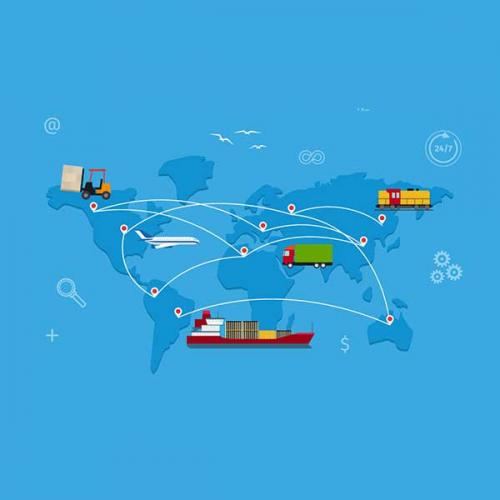
The terms “Supply Chain” and “Logistics” are often used interchangeably by people around the globe. Naturally, this can prompt a lot of perplexity among individuals who are trying to define their objectives, mainly because these are different areas. Every one of them includes various obligations, deliverables, and procedures. The confusion is that people consider logistics and supply chain management to be the same thing. However, logistic operations are part of the whole supply chain management.
A complete supply chain management is the design and management of seamless value, added systems that combine the flows of:
- Materials (Forward and reverse)
- Cash (Forward and reverse)
- Information (orders, requirements & legalities)
- Resulting decisions (Individual & collectives)
The efficient and effective integration of all the relevant organizations across organizational boundaries and interfaces is done so that products or services are recognized. Further, they’re provided to the consumer to increase agility, optimize system-wide costs and satisfy requirements throughout the product life-cycle, thus sustaining all major and minor concerns.
All decisions in the supply chain are linked to 4 factors:
1. Time: Time is cumulative of the overall ‘Time taken’ to accomplish all the activities such as Time taken to get and give out information, Time is taken to process the data, and convert into orders, transmitting that information to the assigned destinations and the resulting decisions.
2. Space: Space comprises the distance from the source of material, destination, and available modes of transportation.
3. Money: Money is defined as the flow of funds across the supply chain (From Customer to supplier and reverse), which is called money rotation, which depends on the availability of funds.
4. Inventory: Inventory is the only tangible and physical aspect of the supply chain. Managing the flow of stock has become critical to maintaining supply-chain performance i.e., sourcing, processing, stocking, and delivery.
While Supply Chain is an end-to-end practice, the thing that comprises the process and the positions, logistics is a process that starts with a requirement and completes with the satisfaction of that prerequisite. In business, logistics plays the role of how to get something from point A (routinely, the provider, or source) to point B. From a company's point of view, it incorporates procedures, for example, collecting, transportation, taking care of, and quality affirmation, among others.
Numerous components play crucial roles in a logistical structure; for instance, costs and volumes are audited to ensure they satisfy the requirements. Quality confirmation manages the exactness of what is being procured and shipping & handling the time that takes to move the things from the transportation point to the conveyance point.
Logistics play a crucial role to ensure extraordinary levels of productivity since it can lessen the time it takes to get what is being demanded in the hand of those that are manufacturing or delivering the goods and services to the final customers.
Hence we must understand that a supply chain will define the company's entire portfolio of suppliers, suppliers' suppliers, distributors/ whole-sellers, and consumers in the end. It is an overall matter of flow of materials, money, and information, to and fro. But logistics is a particular part of the whole supply chain, which only deals with order taking and delivery of materials, including transportation..